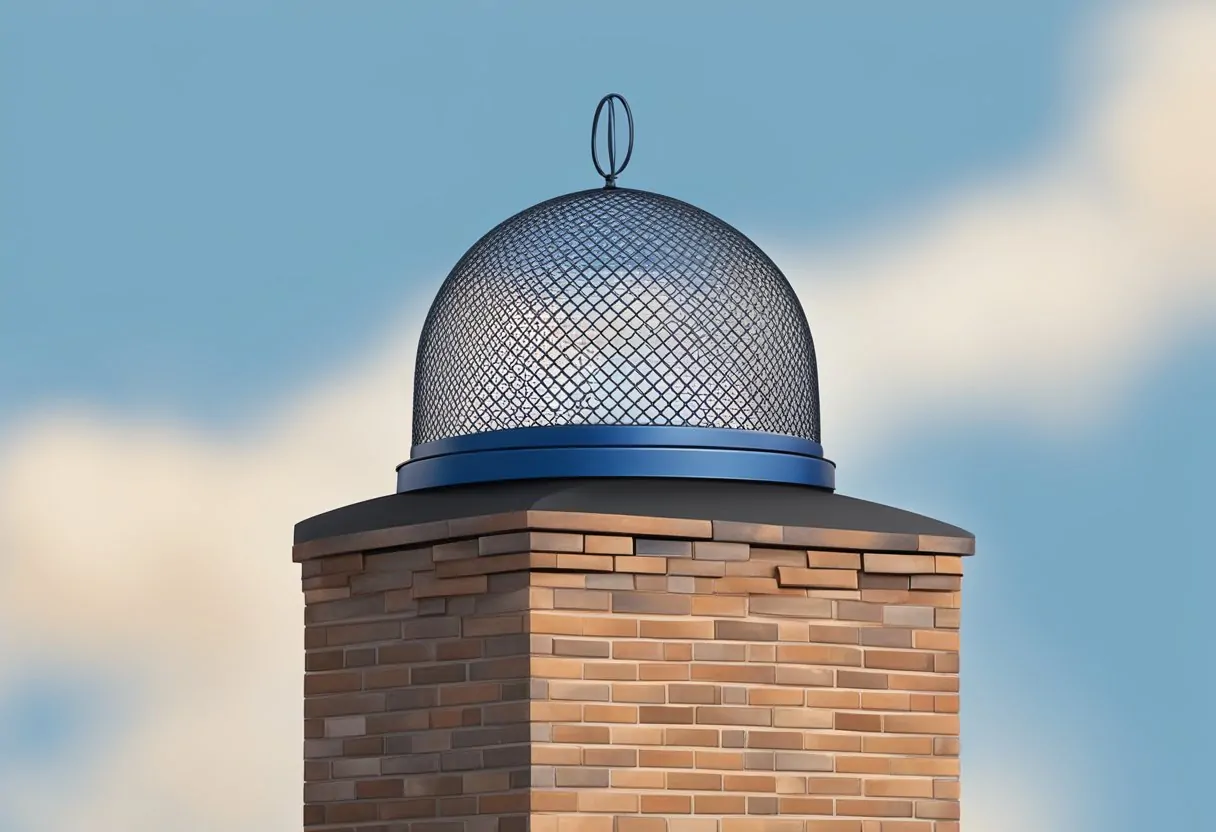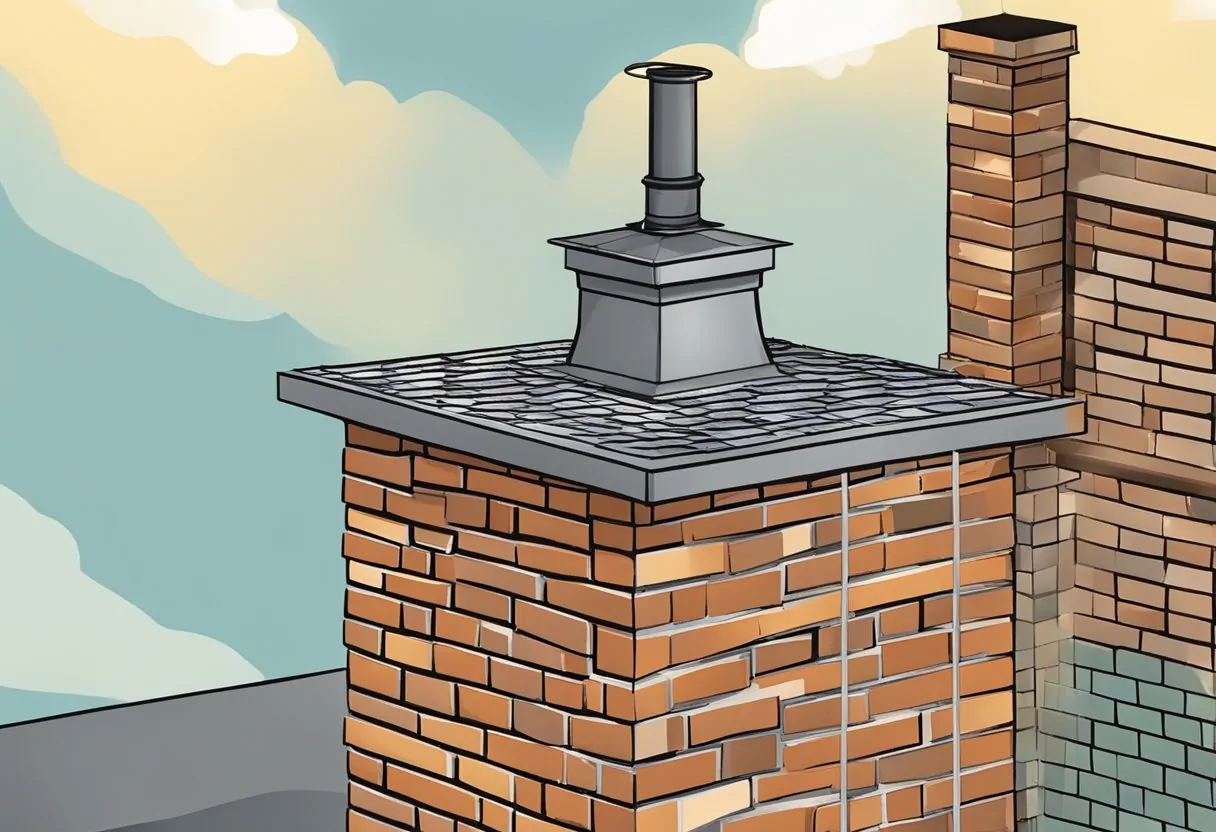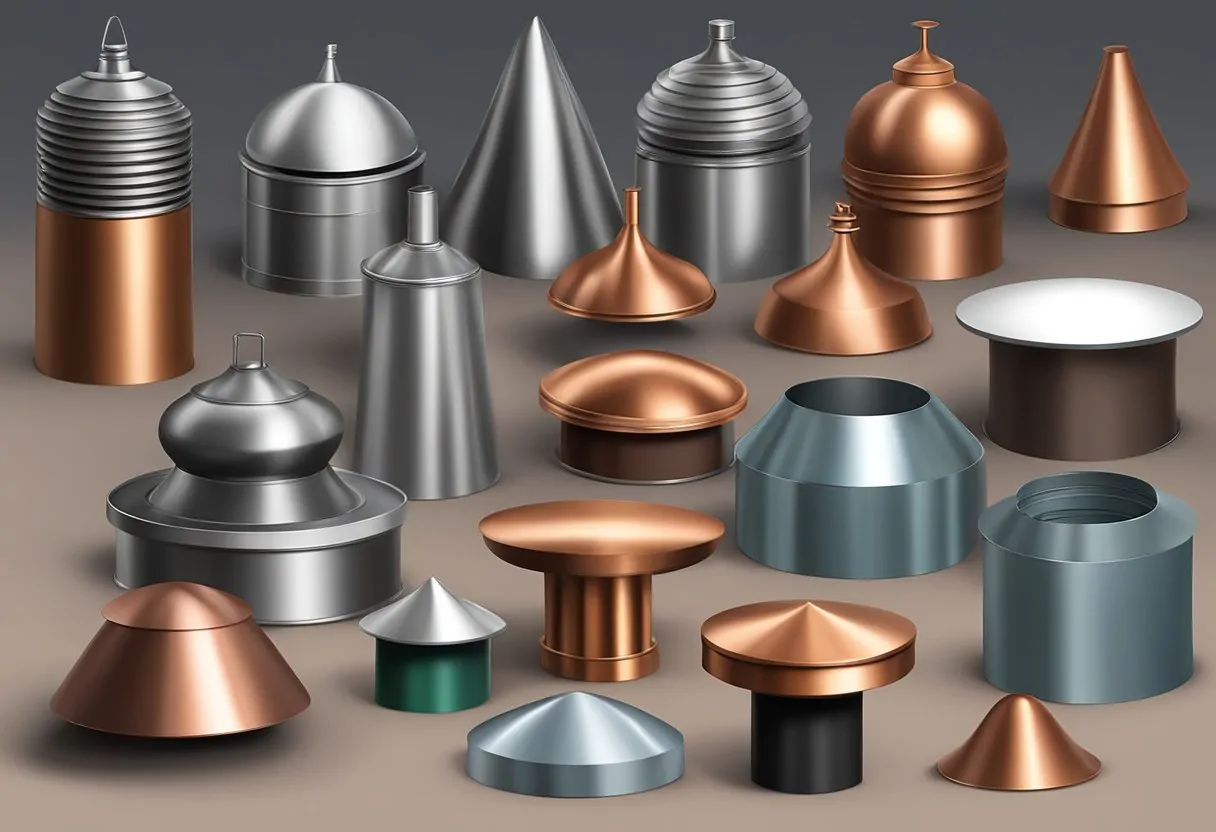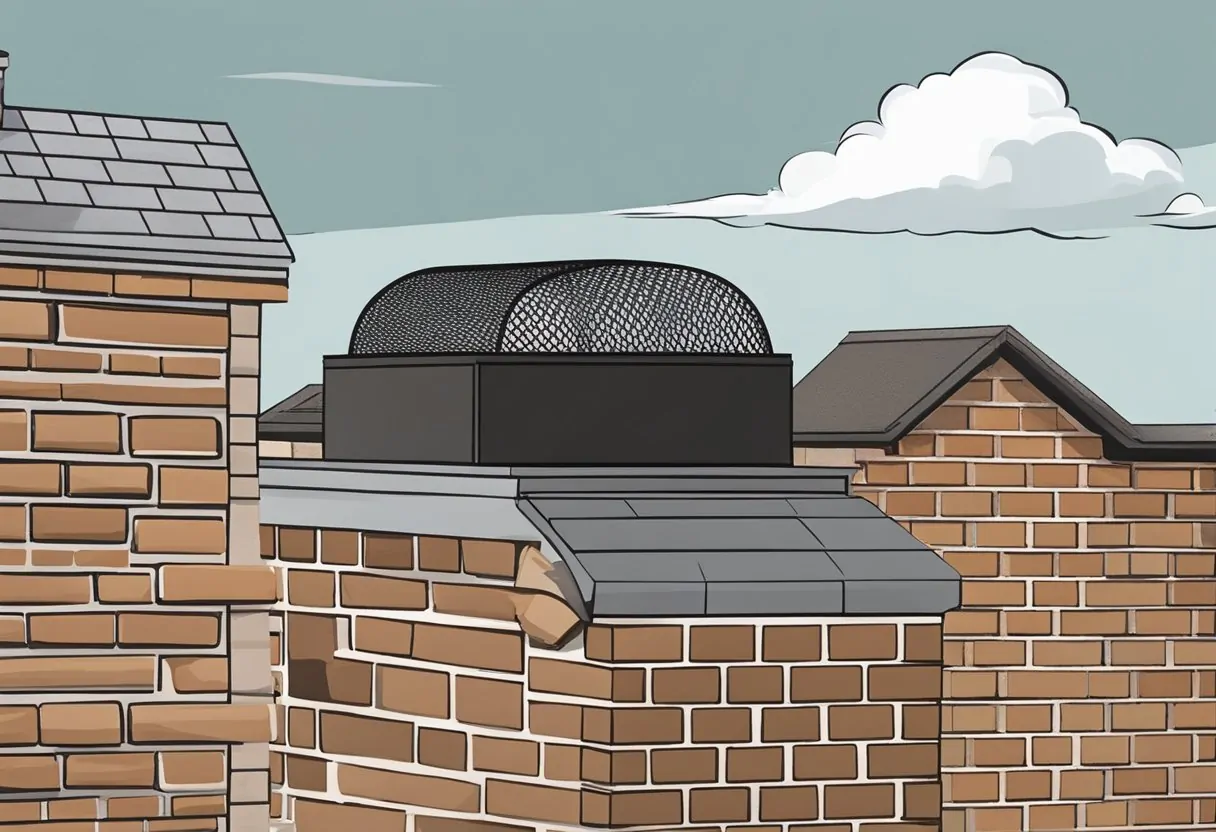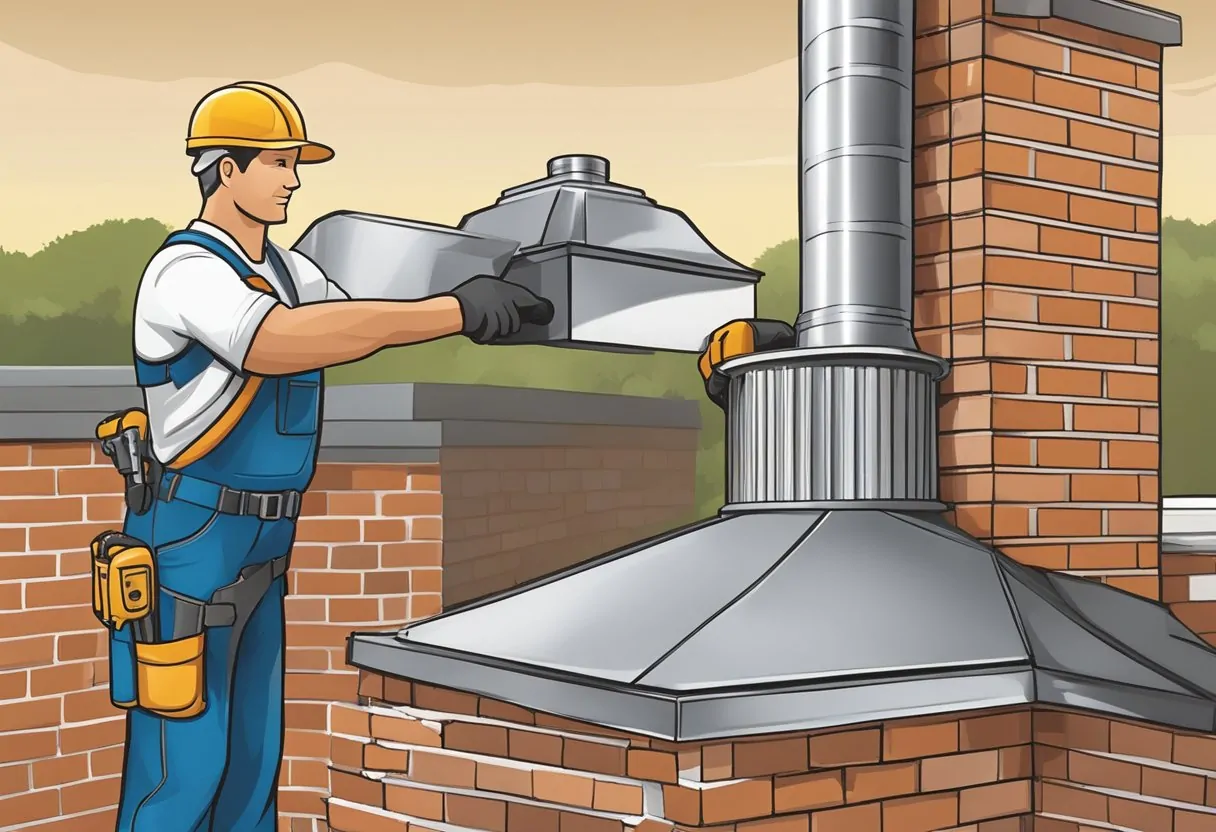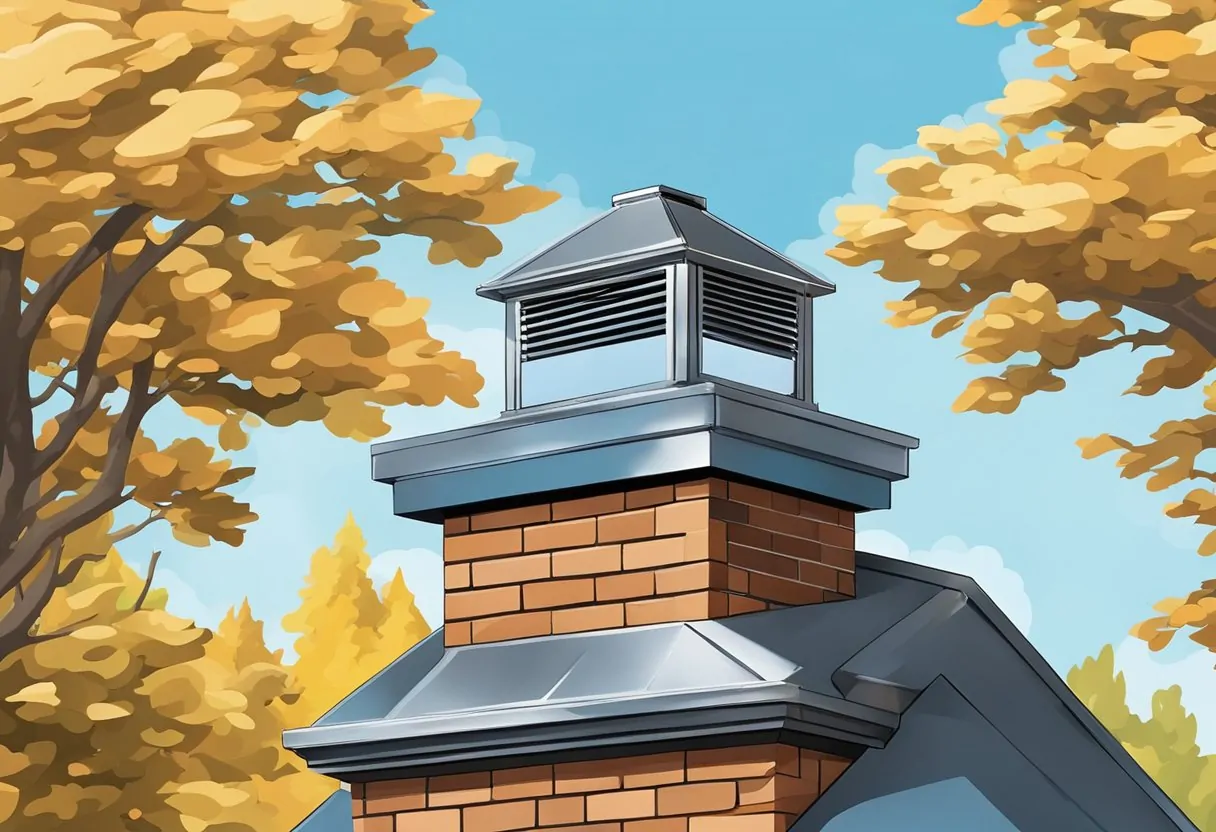Introduction
Chimney caps are essential elements for protecting our chimneys and ensuring a well-functioning fireplace. Most chimney caps are made from durable materials such as stainless steel, copper, or aluminum, designed to withstand the elements and maintain their integrity over time. Understanding the various materials and types available can greatly enhance our ability to select the right chimney cap for our home, ensuring proper function and aesthetics.
When we explore the construction of chimney caps, we find that each material offers unique benefits. Stainless steel, for example, is highly resistant to corrosion, making it an excellent choice in areas with harsh weather conditions. Meanwhile, copper adds a classic look with its natural patina, while aluminum provides a lightweight yet sturdy option that is often more affordable. Learning about these options helps us make informed decisions tailored to our specific needs.
As we navigate through the details of chimney caps, we will address important factors such as functionality, sizing, and installation. By equipping ourselves with this knowledge, we can ensure that our chimney systems remain protected against water damage, wildlife intrusion, and other potential hazards.
Key Takeaways
- Chimney caps are primarily made of stainless steel, copper, and aluminum.
- Choosing the right material affects durability and overall look.
- Understanding installation and maintenance is crucial for optimal performance.
Materials Used in Chimney Cap Construction
Chimney caps are available in various materials, each offering unique benefits and characteristics. Understanding these options helps us choose the most suitable chimney cap for our needs.
Stainless Steel Chimney Caps
We find stainless steel chimney caps to be popular due to their durability and resistance to corrosion. This material withstands harsh weather conditions, making it suitable for areas with extreme climates.
Advantages:
- Long lifespan, often exceeding 20 years.
- Low maintenance requirements.
- Aesthetic flexibility, available in several finishes.
The strength of stainless steel prevents warping and damage from high heat, making it particularly effective for wood-burning applications. While these caps may come at a higher initial cost, their longevity and performance can lead to cost savings over time.
Black Chimney Caps
Black chimney caps, usually sourced from painted or coated steel, offer a visually appealing option. The black finish can blend seamlessly with various exterior designs.
Advantages:
- Cost-effective alternative to stainless steel.
- Less prone to show dirt compared to lighter colors.
These caps still provide adequate protection from elements and critters. However, we should remain aware that painted finishes may require periodic touch-ups over the years, especially if exposed to harsh conditions.
Galvanized Steel Chimney Caps
Galvanized steel is another common material for chimney caps. This option consists of steel coated in zinc to prevent rusting.
Advantages:
- Typically more affordable than stainless steel.
- Good protection against corrosion when properly maintained.
While galvanized steel caps can serve us well, they may not last as long as stainless steel options. They can develop rust over time, particularly if scratches expose the underlying steel. Regular inspections and maintenance can help prolong their lifespan.
Copper Chimney Caps
Copper chimney caps are favored for their unique appearance and outstanding durability. One of the most enduring materials, copper develops a distinctive patina over time.
Advantages:
- Highly resistant to corrosion and elements.
- Requires minimal maintenance.
Although the initial investment is higher than other materials, copper caps can elevate the aesthetic appeal of our homes. They can last 50 years or more, providing both function and beauty. Regular cleaning can help maintain their shine if that look is desired.
Types of Chimney Caps
Chimney caps come in various types, each designed to serve specific functions and suit different chimney structures. Understanding these types helps us choose the right cap for our needs, ensuring optimal performance and protection.
Wind Resistant Caps
Wind resistant caps are specifically designed to protect chimneys in areas prone to strong winds. These caps often feature a unique shape that directs wind away from the flue, preventing downdrafts that can obstruct airflow.
Typically constructed from durable materials like galvanized metal or stainless steel, they offer long-lasting protection against the elements.
Moreover, many models come with screens to deter critters from entering the chimney, adding an extra layer of safety. Homeowners in storm-prone regions find these caps particularly beneficial for maintaining efficient chimney function.
Single-Flue Chimney Caps
Single-flue chimney caps are the most common type found on homes with a single fireplace or wood stove. These caps cover one flue and are available in various sizes and styles, allowing us to customize them to fit our specific chimney dimensions.
Made from materials such as stainless steel, copper, or aluminum, they provide essential protection against rain, debris, and animals.
Additionally, the screens help prevent downdrafts and block unwanted access to the flue. Regular maintenance ensures these caps function effectively, making them a practical choice for most residences.
Multi-Flue Chimney Caps
Multi-flue chimney caps are ideal for homes with multiple fireplaces or flues. Designed to cover more than one flue, these caps provide comprehensive protection for complex chimney systems.
Constructed from sturdy materials like stainless steel or galvanized metal, they can withstand harsh weather conditions while offering a seamless look for our rooftops.
These caps typically include built-in mesh screens to keep animals out and prevent downdrafts. Choosing a multi-flue cap helps us avoid the hassle of individual caps, providing a streamlined solution for larger homes.
Custom Chimney Caps
Custom chimney caps allow us to tailor the design and materials according to our preferences and specific chimney requirements. These caps can be designed to complement the architectural style of our homes while providing the necessary functional benefits.
Options include a variety of materials, colors, and styles, ensuring that these caps not only serve as protective elements but also enhance curb appeal.
Additionally, many custom caps can incorporate features like built-in spark screens or unique ventilation systems, adding to their overall effectiveness. For those with unique chimney configurations or aesthetic desires, custom caps present an excellent solution.
Chimney Cap Functionality and Sizing
Chimney caps play an essential role in protecting our chimney systems. Understanding their functionality and proper sizing ensures they effectively safeguard the chimney flue against various elements.
Protecting the Chimney Flue
Chimney caps are designed to prevent rain, snow, and debris from entering the chimney flue, which could lead to water damage and blockages. They typically include a metal mesh body with a hood on top. This design keeps out precipitation while allowing smoke to escape.
Moreover, chimney caps prevent animals, such as birds and raccoons, from nesting in the flue. By securing the top of the chimney, we create a barrier against these intruders that could obstruct airflow and risk fire safety.
Key Functions:
- Prevent Downdrafts: Chimney caps mitigate unwanted air movements down the chimney.
- Animal Protection: Screens inhibit entry and nesting by small animals.
Chimney Cap Sizing Considerations
Choosing the correct chimney cap size is critical for optimal performance. To determine the appropriate size, we measure the chimney flue’s width from edge to edge. For square flues, using dimensions like 8.5” x 8.5” allows us to find the suitable cap within ranges such as 7.5” x 7.5” to 9.5” x 9.5”.
It’s essential to consider the chase cover, especially if our chimney flue is part of a chase. Proper sizing ensures that the cap fits snugly, preventing water and debris intrusion.
Sizing Tips:
- Measure flue dimensions accurately.
- Consider chimney cap heights and designs for enhanced functions.
By paying close attention to these factors, we can significantly extend the lifespan and efficiency of our chimney systems.
Installation and Maintenance
Installing and maintaining a chimney cap is essential for protecting our chimney system from external elements. Proper installation ensures functionality, while regular maintenance prevents costly repairs and enhances safety.
Proper Chimney Cap Installation
To install a chimney cap correctly, we begin by ensuring that the dimensions match the chimney opening. The cap should fit securely over the chimney crown to prevent water entry. We choose materials like stainless steel or copper for their durability and resistance to corrosion.
Here are the steps to follow:
- Inspect the Chimney Crown: Check for any cracks or damage that may need repair first.
- Secure the Cap: Use bolts or screws to fasten the cap, ensuring a tight fit.
- Weatherproof: Apply sealant around the edges to create a waterproof barrier.
Routine Chimney Cap Maintenance
Regular maintenance is critical for extending the life of our chimney caps. We should perform inspections at least twice a year, especially before the heating season begins.
Key maintenance tasks include:
- Visual Checks: Look for rust, corrosion, or damage to the mesh.
- Debris Removal: Clear any leaves, twigs, or bird nests from the cap.
- Mesh Integrity: Ensure the screen is intact to keep out animals that might clog the flue.
Address any wear promptly to avoid additional issues.
Chimney Sweeps and Inspections
Engaging professional chimney sweeps is a valuable practice for maintaining our chimney systems. Annual inspections by a qualified professional help us identify potential problems early.
During these inspections, the chimney sweep will:
- Assess the Chimney Cap: Look for structural integrity and fit.
- Clean the Flue: Remove soot and debris that could affect airflow.
- Inspect Masonry and Crown: Ensure the chimney crown is intact and that no water damage exists.
These steps promote safety and efficiency, preventing larger repairs in the future.
Cost Factors and Considerations
When considering the cost of a chimney cap, various factors come into play. The material of the chimney cap significantly impacts the price. Common options include:
- Stainless Steel: $100 – $150
- Copper: Higher cost, often exceeding $500
- Galvanized Steel: Usually more affordable but less durable
The shape of the chimney cap also affects pricing. Standard shapes, such as round or square, typically range from $300 to $575. Custom shapes may incur additional costs.
Labor costs for installation range from $125 to $1,200, depending on the complexity and location of the chimney.
We must also consider the type of chimney. For example, masonry chimneys may have different installation requirements compared to metal ones, which may also necessitate custom caps.
Regular inspections and maintenance can prevent issues related to carbon monoxide buildup, which could arise from insufficient protection against debris or animal entry.
Before making a decision, it’s crucial to assess the overall condition of the chimney and any necessary repairs, as these could significantly influence total expenses.
Frequently Asked Questions
We understand that choosing the right chimney cap can raise many questions. Here we address common inquiries regarding materials, types, and their functions to help you make informed decisions.
What is the best material for a chimney cap?
The best material for a chimney cap often depends on the specific environmental conditions and budget. Stainless steel is popular for its durability and resistance to rust. Copper offers an appealing aesthetic and can last for decades, while aluminum is lightweight and cost-effective.
What are the different types of chimney caps available?
Chimney caps come in various materials such as stainless steel, copper, galvanized steel, and aluminum. Each type has unique advantages, including resistance to corrosion and different aesthetic choices. Custom options are also available to match specific chimney designs.
How do copper chimney caps compare to stainless steel ones?
Copper chimney caps are often more expensive but provide an elegant look and exceptional longevity. Stainless steel caps are more affordable, resilient against harsh weather, and require less maintenance. The choice depends on personal preference and budget considerations.
Which chimney cap is preferable to protect against rain?
A chimney cap with a sloped design and integrated drip edge is best for preventing rain from entering the chimney. Stainless steel or copper options are effective, as they are both durable and resistant to moisture damage. Proper installation enhances their protective features.
Are there specific chimney caps recommended for manufactured chimneys?
Yes, manufactured chimneys may require specialized caps that fit their unique designs. These caps ensure a proper seal and prevent debris from entering. It’s important to consult manufacturer specifications to choose the right type.
What distinguishes a chimney cap from a flue cap?
A chimney cap covers the entire chimney to protect it from weather and animals, while a flue cap specifically covers the flue opening. Both serve protective functions, but chimney caps provide additional benefits, such as enhancing airflow and preventing downdrafts.

